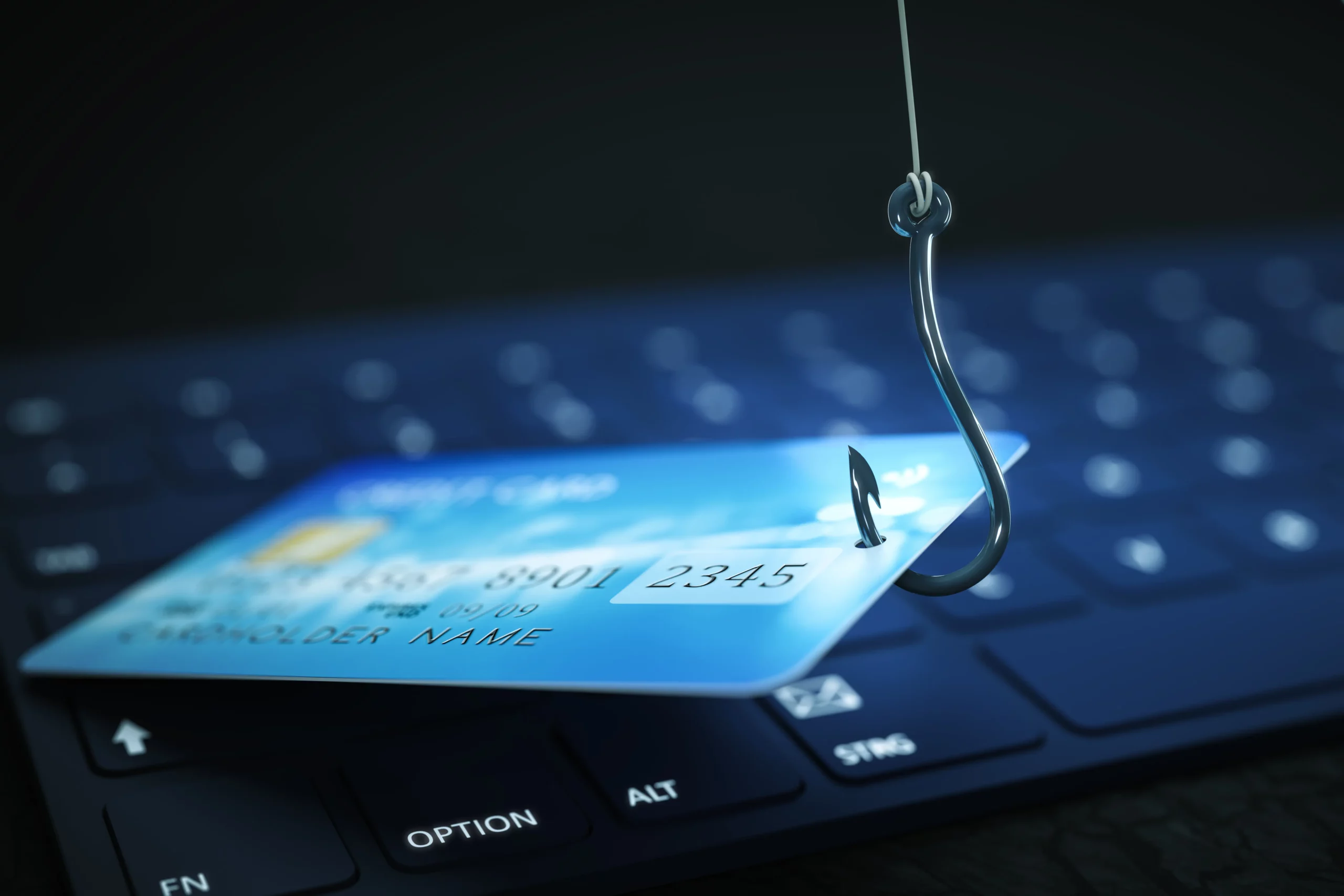Outsmarting Phishing and Smishing: A Guide to Identifying and Preventing Cyber Threats
Phishing and smishing have become two of the most common cybersecurity threats facing our interconnected world. As daily business operations are increasingly conducted online, it is crucial that individuals and organizations understand these attacks and implement thoughtful defenses.
This comprehensive guide will examine exactly how phishing and smishing work, the psychology behind their effectiveness, real-world examples of high-profile attacks, and actionable best practices you can follow to protect yourself and your business. Let’s dive into smishing and phishing scams.

What is Phishing?
Phishing refers to fraudulent emails disguised as those of trustworthy senders, like banks, tech companies, retailers, or government agencies. These emails use social engineering tricks and technical spoofing to appear authentic, incorporating official logos, formatting, and messaging.
The aim is to convince recipients to click on embedded malicious links or attachments that seem legitimate but actually infect devices with malware, capture sensitive data, or redirect to fraudulent sites to harvest login credentials and sensitive information.
Phishing messages often create a sense of urgency, demanding immediate action to verify account details, avoid account suspension, or resolve a supposed security issue. The sophisticated branding and urgent tone are engineered to trigger hasty clicks without deeper scrutiny or verification.
What is Smishing?
Smishing refers to phishing conducted via SMS text messages rather than email. The messages appear to come from trusted entities like shipment carriers, telecommunication companies, banks, or social media networks.
These messages may reference a delayed delivery, unpaid bill, account lockout, or other urgent issue that requires the recipient to click a link to resolve. The link then leads to a fraudulent site or other endpoint to steal logins, personal details, financial information, or install malware. Smishing has high effectiveness given the ubiquity of smartphones and text messaging for time-sensitive communications from legitimate companies.
Psychology Behind Phishing and Smishing
What makes these attacks so dangerously effective? They take advantage of:
– Tendency to trust communications appearing to come from known brands: We instinctively trust emails and texts from companies we recognize.
– Fear of account or access loss: Threats of frozen accounts or lost access trigger panic and hasty action.
– Herd mentality: Our likelihood of clicking increases if others appear to have done so.
– Difficulty identifying valid domains: Decoy URLs and domains are hard to decipher at a glance.
– Assumption of sender authenticity: We assume emails and texts are from the claimed sender without always checking further.
Understanding these psychological triggers makes us better equipped to recognize when they are being exploitatively used against us.
Stop Threats Before They Strike.
Sign up for your complimentary cyber risk audit now.
High-Profile Phishing Attacks
To drive home the real-world impacts of phishing, let’s examine some notable incidents:
– Target: The 2013 breach that stole data on 70 million customers started with a phishing email against a heating contractor, granting access to Target’s systems.
– UC San Francisco: The 2020 ransomware attack through a spoofed email encrypted hundreds of servers and medical devices, taking down systems for 2 weeks.
These examples showcase that individuals, educational institutions, and corporations are all vulnerable to well-crafted phishing techniques. It is an expensive, universal cyber threat.
Costly Impacts of Phishing & Smishing
The potential impacts of phishing and smishing range from identity theft and credit card fraud to hijacked corporate data and espionage. Here are some notable negatives:
– Financial loss: Phishing can drain various types of financial accounts, ranging from a business’ bank accounts to retirement savings. The total projected cost from phishing emails in 2021 was $2.7 billion.
– Malware and ransomware infection:Clicking phishing links or attachments can leave your systems open to being remotely accessed and locked, only to be reopened after massive ransom payments.
– Loss of customer trust and brand reputation: Companies breached via phishing suffer public embarrassment, customer churn, and plummeting stock value.
– Productivity and efficiency losses: Dealing with account lockouts, frozen finances, identity fraud, and system downtime all take immense time and disrupt operations.
– Regulatory noncompliance: Due to breaches having to be reported and investigated, phishing victims may face heavy fines and sanctions for exposing customer data.
These potential consequences underscore the importance of implementing proactive anti-phishing and smishing defenses.
Smishing Trends and Examples
Smishing may be less prevalent than phishing, but its popularity is rising given increasing smartphone dependence. There is one device that people will not leave their home without – a phone. Some typical smishing techniques include:
– Package delivery messages with links to fake tracking sites to spread malware.
– Bank messages about locked accounts, triggering users to urgently click attached links and enter their credentials.
– Messages pretending to be social media platforms, prompting users to act to recover their account from an attempted hijacking.
– Two-factor authentication bypass, where users click an SMS link meant for authentication which instead grants account access to criminals.
– Fake messages about unpaid bills and threats of service cancellation if not immediately addressed.
These examples reveal how bad actors utilize urgency and fear appeals to override user skepticism, which is why defenses tailored to SMS are crucial.
How Can Individuals Avoid Phishing and Smishing?
Now let’s outline individual best practices to avoid falling victim to these threats:
– Scrutinize sender email addresses and domain links:Account for spoofing techniques like substituting letters or numbers.
– Check grammar and spelling:Phishing messages often contain mistakes in these areas.
– Watch for threats and urgent tones:A company’s branding guidelines define how external communications should be carried out. Messages designed to stir you into a panic so that you act without thinking are blatant red flags.
– Hover over embedded links: Don’t click on a link right away, use your mouse to hover over it and compare the URL you see to the true destination URL.
– Verify via separate channels: If something seems remotely suspicious, confirm the situation directly via phone call, a different email, company website chat, etc.
– Enable security tools:Use two-factor or multi-factor authentication wherever possible. Install endpoint protection software as well.
– Report phishing attempts: Alert companies and your IT team where any type of impersonation was attempted.
While individual vigilance is foundational to stopping phishing and smishing before it starts, your IT team can help prevent these types of critical and chaotic situations.
Organizational Phishing and Smishing Prevention
For organizations, technical solutions should be combined with thorough education and training to create a multi-layered defense. Recommended tactics include:
Email Security
Email security is a crucial component of an organizational phishing defense. Tactics like Domain-based Message Authentication, Reporting & Conformance (DMARC) email authentication and spoofing prevention make it harder for criminals to impersonate trusted contacts and brands. Blocking potentially dangerous file attachments reduces infection risks, while domain blacklisting of known phishing sites prevents communications from thousands of known scammers. Lastly, advanced spam and automated phishing detection can screen out threats before employees even see them.
Employee education and training
Comprehensive employee education and training are imperative for managing phishing vulnerabilities. Frequently conducting realistic, simulated phishing and smishing campaigns exposes employees to authentic attacks in a safe setting. A training program that teaches how to identify and immediately report suspicious messages kindles critical security awareness.
Your company should provide regular refresher training updates to staff on the latest phishing and smishing developments or techniques seen in the wild. Clearly informing all personnel on proper incident response protocols streamlines advantageous reactions if a phishing threat infiltrates defenses. Above all, promoting general organizational vigilance and a security-first culture prepares your team to institute an effective human firewall.
Ongoing Risk Assessments
Ongoing risk assessments ensure phishing/smishing defenses continue meeting modern threats. Conducting regular audits and vulnerability testing reveal gaps in filters, training, response plans, and overall resilience.
Monitoring emerging phishing and smishing techniques while regularly updating defenses prevents complacency within your workplace. Evaluating and optimizing response plans based on lessons from genuine incidents prepares an organization to handle crises. Together these efforts sustain consistent, adaptive readiness.
Strong Access Policies and IT Hygiene
Strong baseline access policies and IT hygiene also deter smishing and phishing effectiveness. Mandating extensive password complexity, regularly alternating passwords, and universal multi-factor authentication makes stolen credentials far less useful.
Consistently deploying the latest software patches and updating obsolete programs denies hackers from exploiting known infiltration routes. Businesses should also tightly control access to sensitive data so that only essential staff can reach it, as this limits the potential for harming situations. Together, these sound technical and access principles significantly frustrate phishing efforts.
This blend of human readiness and technical precautions provides impactful organizational phishing and smishing resistance.

Conclusion
As our digital lives continue to evolve, it is crucial that individuals and businesses implement robust defenses against prevalent phishing and smishing threats. These attacks leverage sophisticated spoofing techniques, urgent emotional triggers, and hidden technical exploits to steal data, infect systems, and cause financial harm.
However, through heightened scrutiny, improved security hygiene, employee training, and layered technical controls, we can gain the upper hand against these threats. Staying vigilant and keeping our defenses updated are the best ways to protect ourselves from ever-advancing cybersecurity threats now and into the future.
Replace firefighting with foresight. Claim your complimentary Risk Assessment to uncover hidden risks your company may be facing.
We also recommend:
Why You Should Make Paid Advertising Part of Your Marketing Strategy
Paid advertising is an essential component of modern marketing strategies today. Channels like pay-per-click (PPC), social media ads, native advertising, and display ads allow brands to reach targeted prospects when they are most receptive to marketing messages and...
Planning Your Most Profitable Holiday Sales Ever: From Black Friday to New Years
Black Friday represents the Super Bowl of shopping holidays each year. In 2022, consumers spent over $9 billion online on Black Friday alone. However, with high inflation and recession fears looming, this year's numbers could dip; savvy planning and promotion will be...
Welcoming Karla Oellrich as Level Up on Talent’s New AVP, People Operations
We are thrilled to announce a significant addition to our executive team: Karla Oellrich. Transitioning from her AVP HR Operations and Talent role at Noble Capital, Karla joins us as AVP of People Operations at Level Up on Talent.Karla's move to Level Up on Talent...
Decoding the Value: Why a CMO Advisor Makes Financial Sense for Your SMB
Does your SMB need strategic marketing leadership but is concerned about the cost? Discover why a CMO Advisor is a financially smart move that delivers high-impact results. #CMOAdvisor #CostEffectiveLeadership #DigitalMarketing #LevelUponBrand
Subscribe to Founders Forward Digest
Be the first to know – only our subscribers receive our founder focused email digest filled with exclusives.




